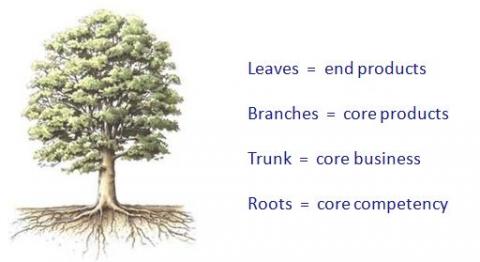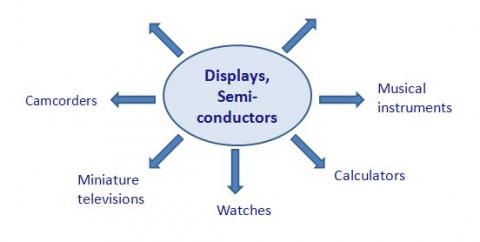Source : George S. Yip, Anderson Graduate School of Management, University of California, Los Angeles, and Garry Hamel and C.K. Prahalad
A new view of strategy ?

The thesis of strategic intent : Companies that have risen to global leadership began with ambitions that were out of all proportion to their resources and capabilities
Aspects of strategic intent :
Obsession
Desired leadership position and criteria the organization will use
Captures the essence of ambition
Stable over time
Sets target that deserves personal effort and commitment (“Beat Benz” , “We will get to the moon before 10 years”)
Two models of strategy:
Maintaining strategic fit, trimming ambitions to match available resources, and resources allocated to product units
Leveraging resources, investing in core competences
Defeating the old strategy :
Planners vs winners
Search for loose bricks
Change the rules
The process of surrender
Strategy recipes limit opportunities for competitive innovation
Portfolio management leads to predictable predation
Inflexible SBU organizations
The core competency concept :

Competence different from technology :
Technology | Competence |
Stand alone | System embodied |
Explicit knowledge | Tacit knowledge |
Narrowly held | Deeply embedded |
Easily copied / acquired | Difficult to unbundle |
Discontinuous process | Aggregative process |
Inventive capability | Integrative capability |
Competence = Technologies + social organization + collective learning
Shared information as essence of core competence :
It can be used simultaneously in several different applications
A competence does not “wear out”, though it must be constantly renewed
Competence can be combined in new ways to create new opportunities
Claims for core competence :
A basis for competitive advantage in the medium term
A higher order defensible advantage
A basis for competitive benchmarking
A spot for new business development
The “glue” that hold businesses together
Picking a core competence :
Significance as a source of competitive differentiation
Potential breadth of applications
Difficulty for competitors to imitate
Implications of firm as portfolio of competences :
Different notion of relatedness
Different value added from different levels of management
Different reward criteria for different activities
Fully exploiting the opportunities for shared learning and shared costs
Example of core competence :

Behaving as if a firm is a portfolio of competencies :
Identifying and nurturing core skills that enhance the competitiveness of a range of businesses
Distinguishing the investment in core competencies from individual businesses
A recognition that core competencies are not owned by individual businesses
Rich horizontal communication to share learning
Using core competencies as a notion to screen new business opportunities
A way of moving people around the organization, across businesses without organizational trauma
Core competencies are the logic that holds together the apparently diversified activities of the best product innovators.
In these companies, the corporation / top management views these resources as a portfolio of competencies as well as a portfolio of product-based or service-based businesses.
Critical tests for core competencies :
Provides potential access to a wide variety of markets
Makes a significant contribution to the unique quality of end product or service
Be difficult for competitors to imitate
Core competencies should change the way resources are allocated in the organization :
They are corporate resources, not individual resources, which, like cash, may be reallocated by management
Individual projects should bid for competencies in the same way they bid for financial resources
Competence carriers should be given exposure to a variety of projects to disseminate those CC´s (planned rotation programs, assignments to cross-divisional projects, regular meeting to trade notes and ideas).
Finding the right focus :
| Too narrow | Just right | Too broad |
GE Medical systems | X - ray equipment supplier | Diagnostic imaging | Medical equipment |
Motorola | Radio-based communications | Mobile and portable communications | Communications |
Corning | Glass | Glass and ceramics technology | Biotechnology and medical diagnostics |
(Source : Joseph G Morone, 1993)
